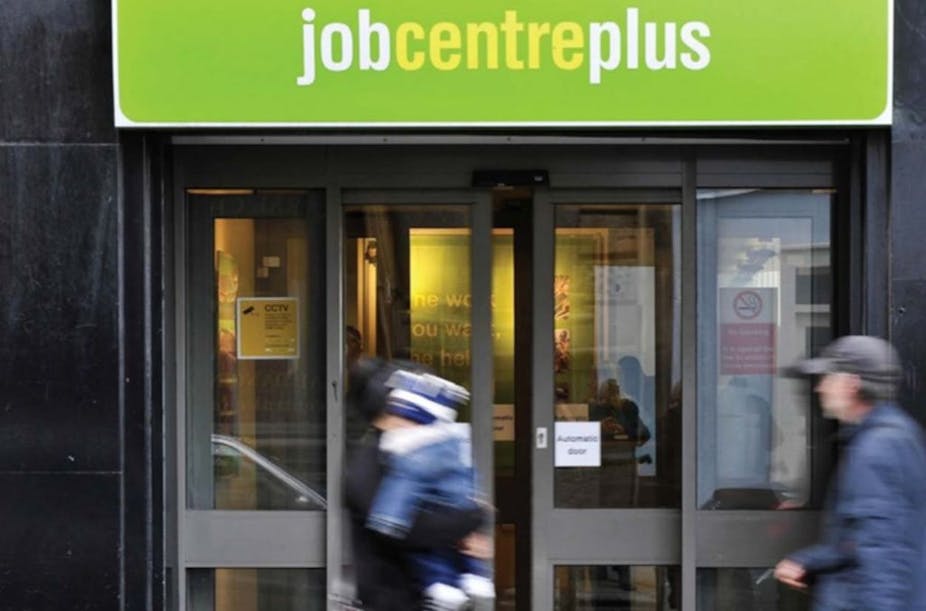Unemployment in the UK has fallen below two million for the first time in almost six years, latest figures from the Office for National Statistics show. It’s certainly good news, but there are some important caveats to the headline figures, which mask the remaining room for improvement in the labour market.
One of the many remarkable features of the 2009 recession was the fact that the increase in unemployment was relatively modest in the UK. While the 1980s recession brought about unemployment of 3.25m, the much more severe drop in output in the more recent downturn saw unemployment rise “only” to some 2.68m. The rate remained stubbornly high, at around 8%, until the second half of 2013. But since then it has fallen dramatically, and now stands at just 6%.
Several aspects of the labour market in the aftermath of the recession are worthy of note. First, many workers are now working fewer hours than they would like. Some are working part-time when they would like to work full-time; others lack opportunities to work overtime; and others would like to hold multiple jobs but are unable to do so.
Tracking underemployment
At the Work Foundation, we publish a quarterly series of underemployment produced by economists David Bell and David Blanchflower from Labour Force Survey data. This converts the shortfall in hours that people work relative to those that they would like to work into a full-time equivalent, and hence produces a measure of underemployment that is analogous to the unemployment rate.
Until the recession the underemployment series tracked closely with unemployment – in other words, on average, the number of hours that people in work were working were close to the number of hours that they wanted to work. Since the recession, however, underemployment has amounted to the equivalent of about two extra percentage points on top of the rate of unemployment. So an unemployment rate of 6% implies an underemployment rate of around 8%. This means that there is still plenty of slack in the labour market.
Rise of self-employment
Secondly, self-employment has risen to record levels, with over 4.5m people – virtually 15% of the labour force – now falling into this group. This is up from around 12% in 2003. The increase has been particularly pronounced since 2013 – though the very latest figures may show the beginnings of a fall back.
Underemployment is a particular issue for self-employed workers. Moreover, a substantial minority (some 28%) of those who have become self-employed since the onset of recession would prefer to be employees – a far higher proportion than of those who were self-employed before.
There is also substantial evidence that the earnings of self-employed workers have fallen much further – indeed about twice as far – than those of other workers in recent years. So, self-employment is not necessarily the labour market outcome of choice and shouldn’t be lauded as such.
Thirdly, productivity has been stagnant in recent years. Since wages are, in competitive markets, determined by workers’ productivity, this has led to stagnant or falling real wages. This further reflects the fragility of the recovery in the labour market.
A return to the ‘natural rate’
On the most recent data it looks as though the “natural rate” of unemployment has fallen markedly from the figure at which it stood a few years ago. This is the rate below which inflation is likely to become a problem, as firms seek to outbid each other for scarce labour and workers start to build expectations of positive inflation into their decisions about accepting job offers.
Indeed it may well be the case that the natural rate of unemployment now stands at just 4%, or even a little less. If this is truly the case, the promise of a return to something like full employment genuinely looks achievable.
On the surface of it, recent labour market statistics paint a very rosy picture. Employment is trending up, unemployment is trending down, the recovery that started in London and the South East is finally spreading around the country. This is all certainly good news.
But the extent of underemployment, and the insecurity that attaches to much employment, means that there is more slack in the labour market than the headline rate of unemployment indicates. This means further improvement in the labour market is certainly still possible before inflation will kick in.
The real question is this: with major trading markets once again looking quite fragile, will the type of economic growth we have witnessed this year be sustained into the medium term? If it can be, then the labour market can improve still further. If not – and the smart money is on this outcome – the improvement may stall.

